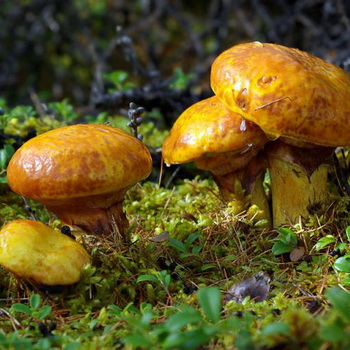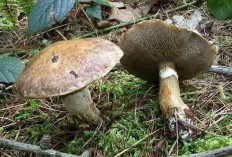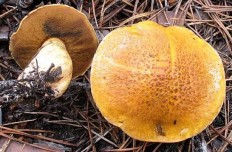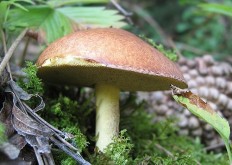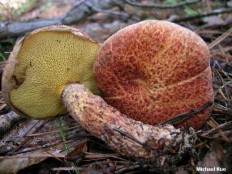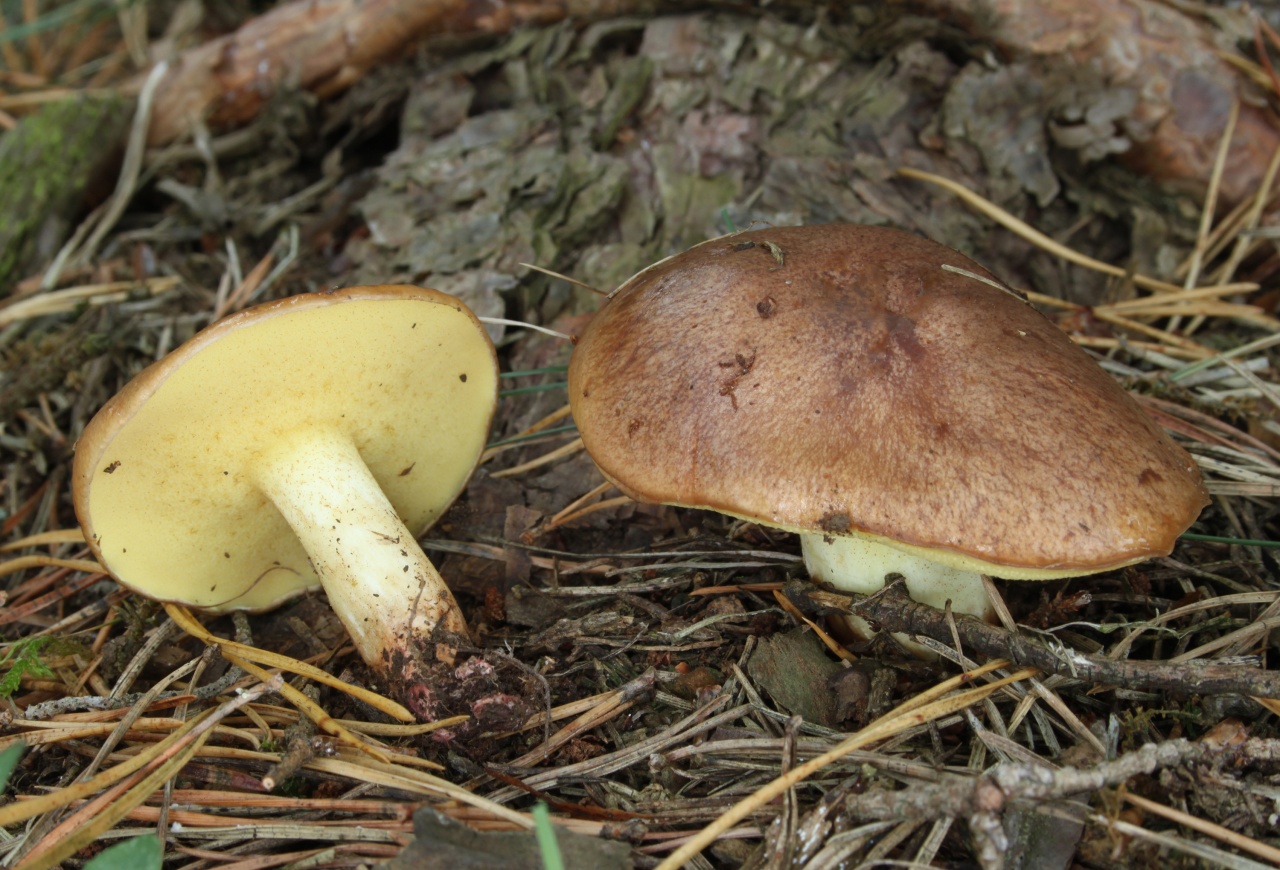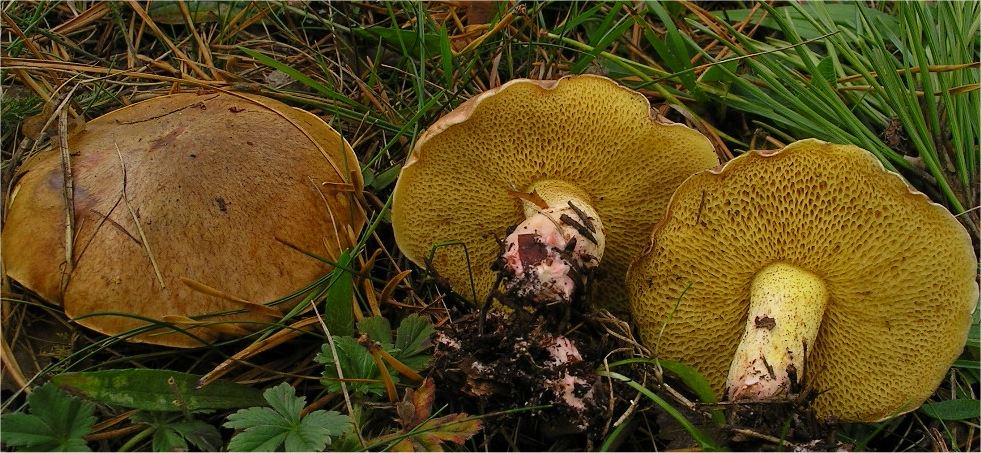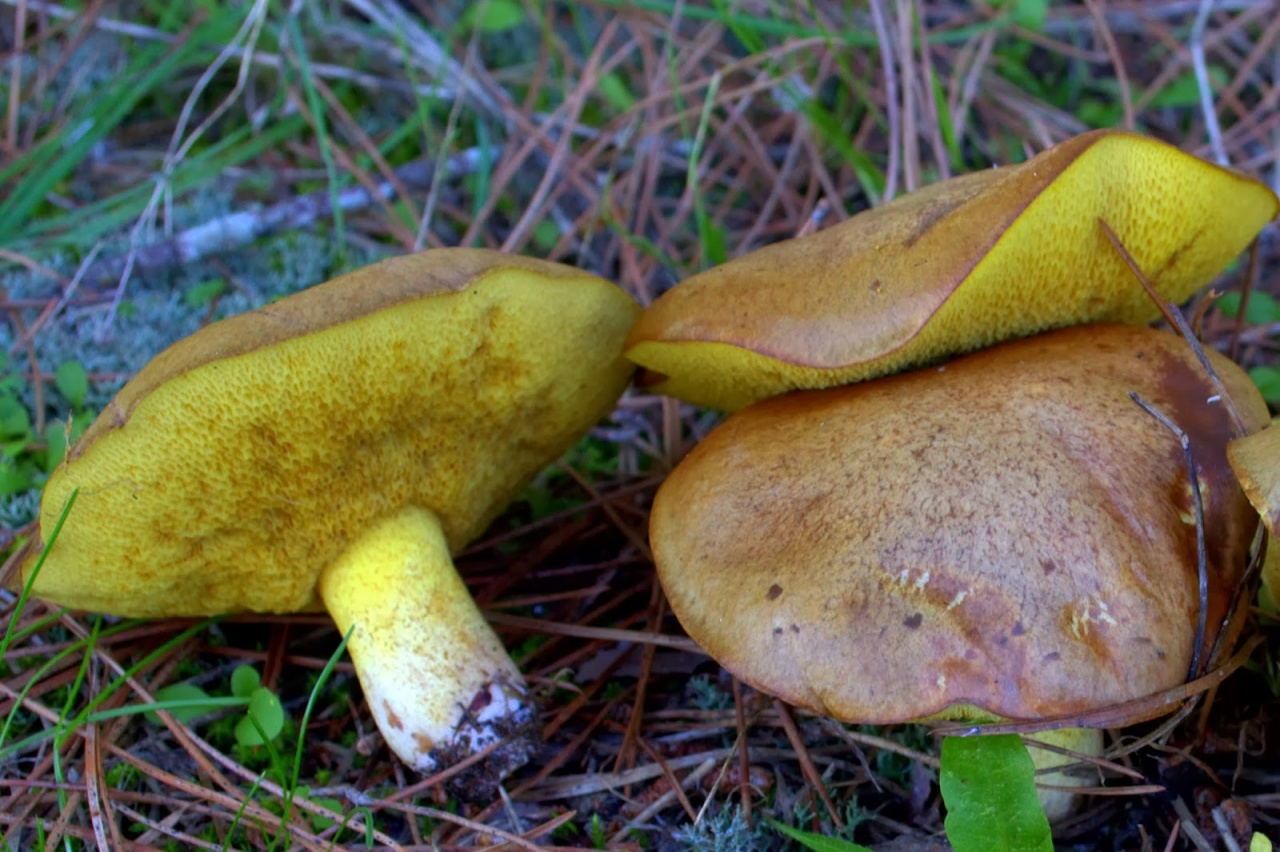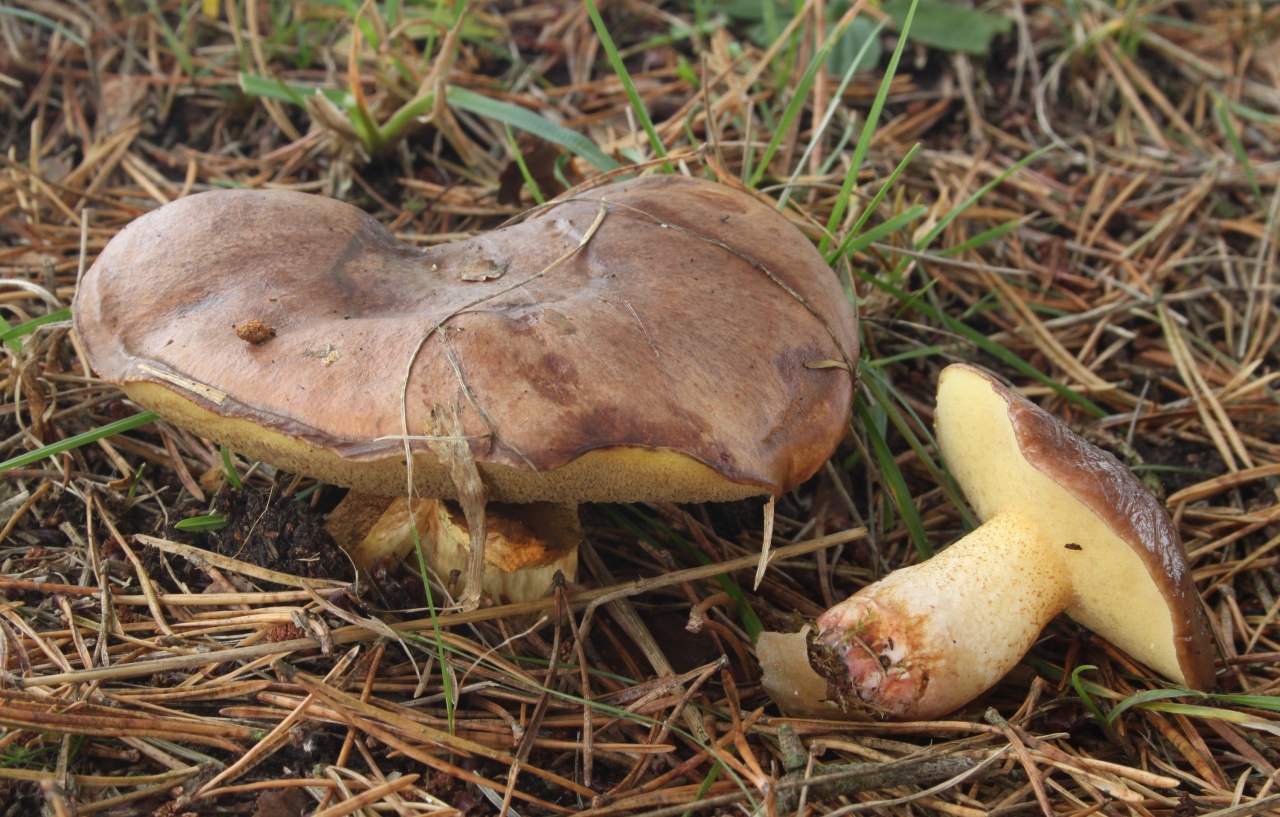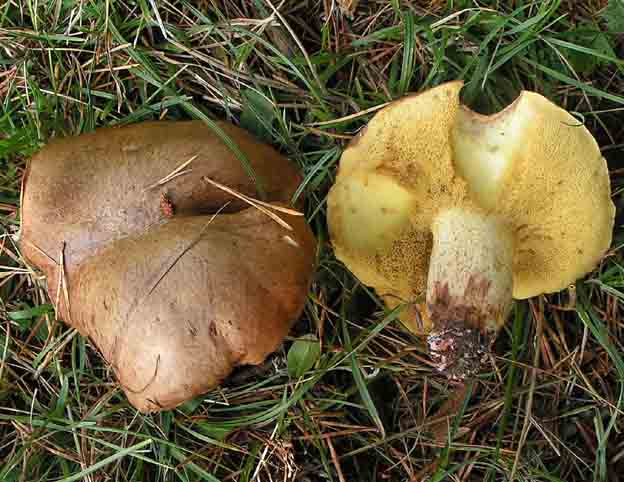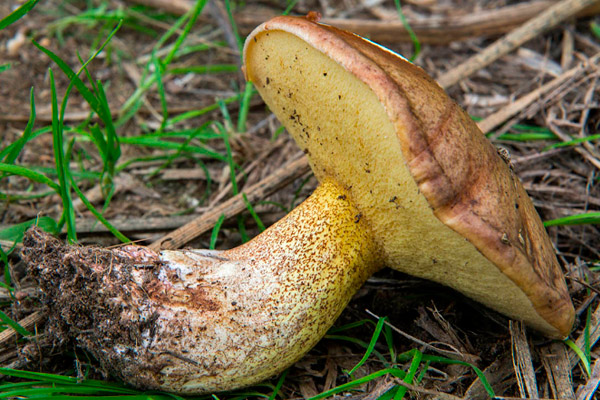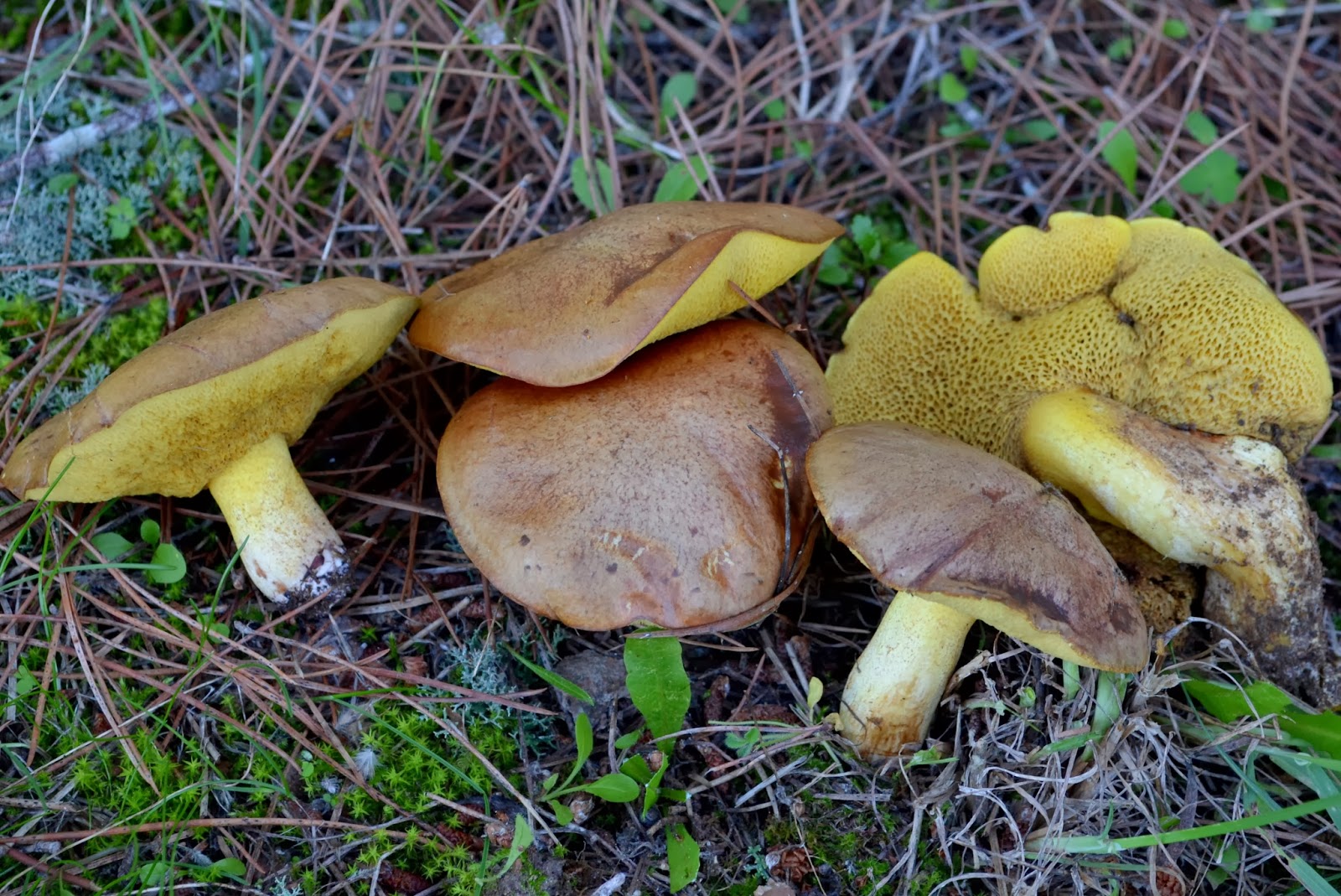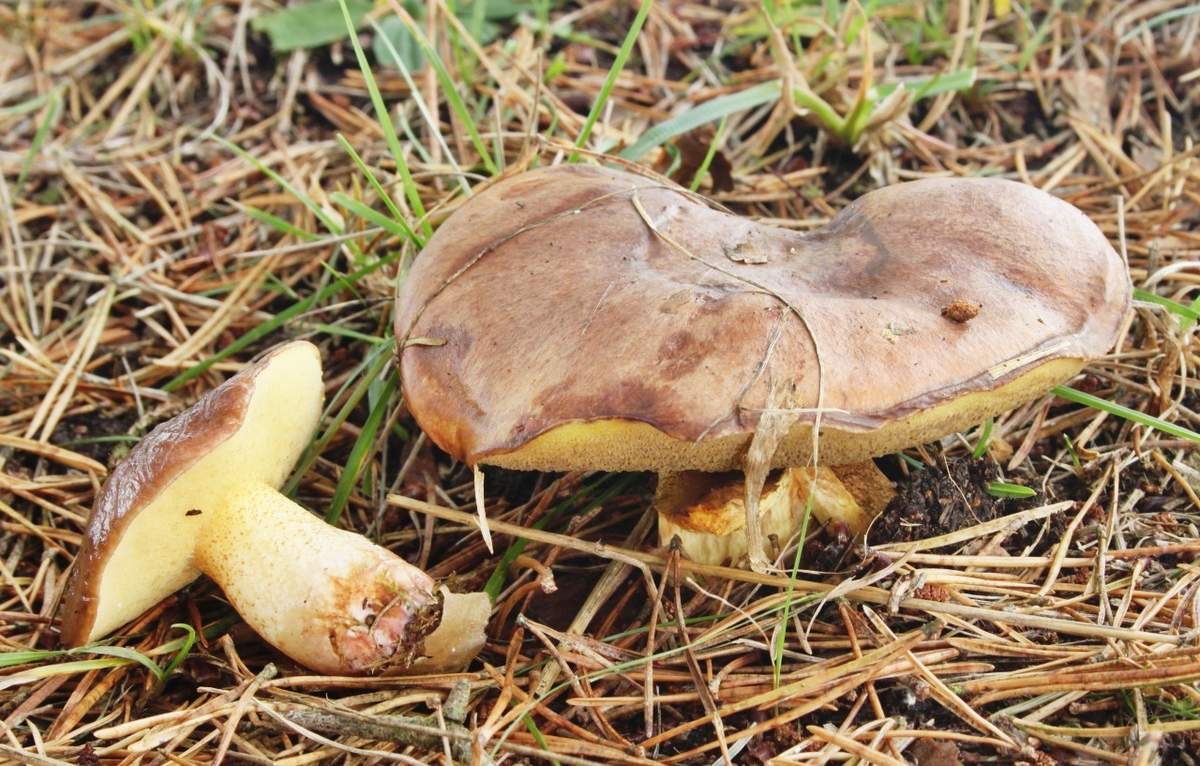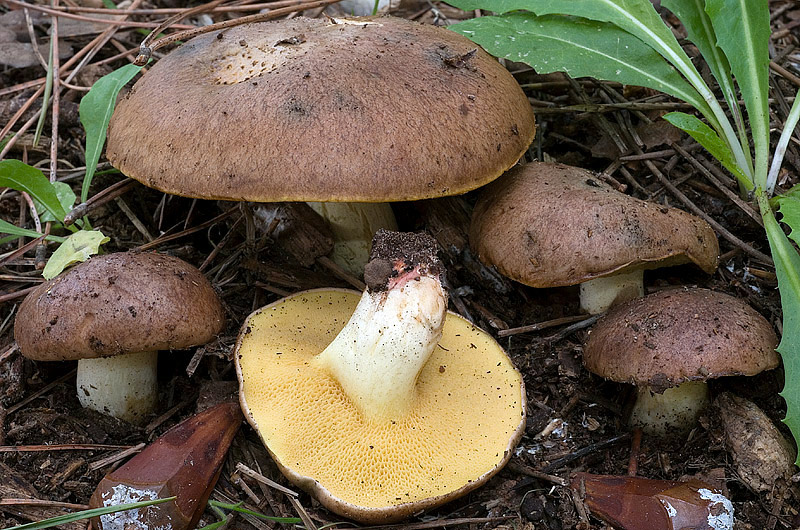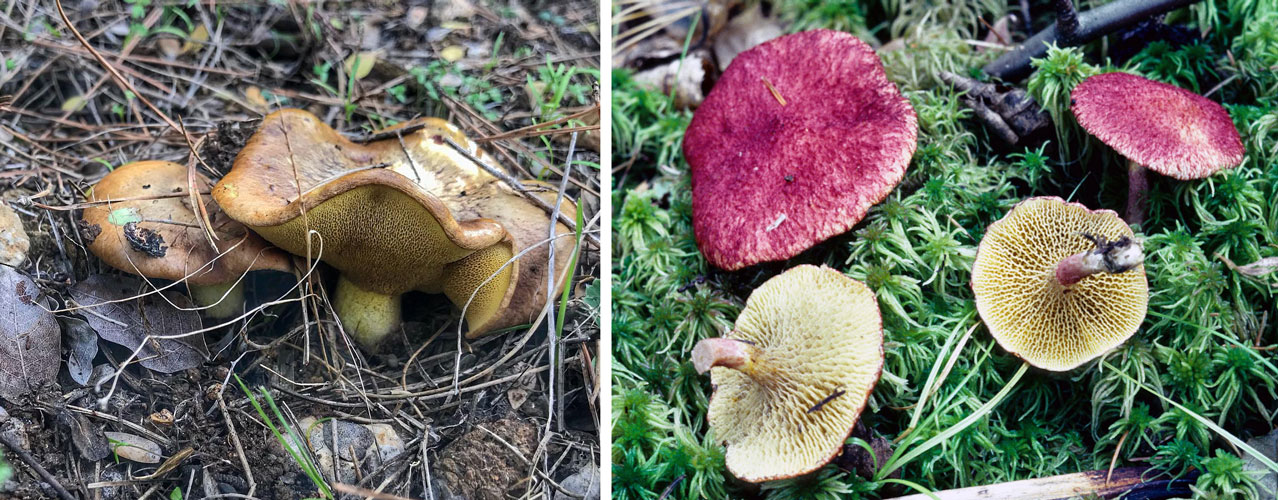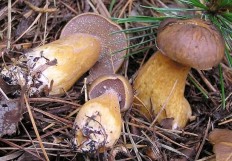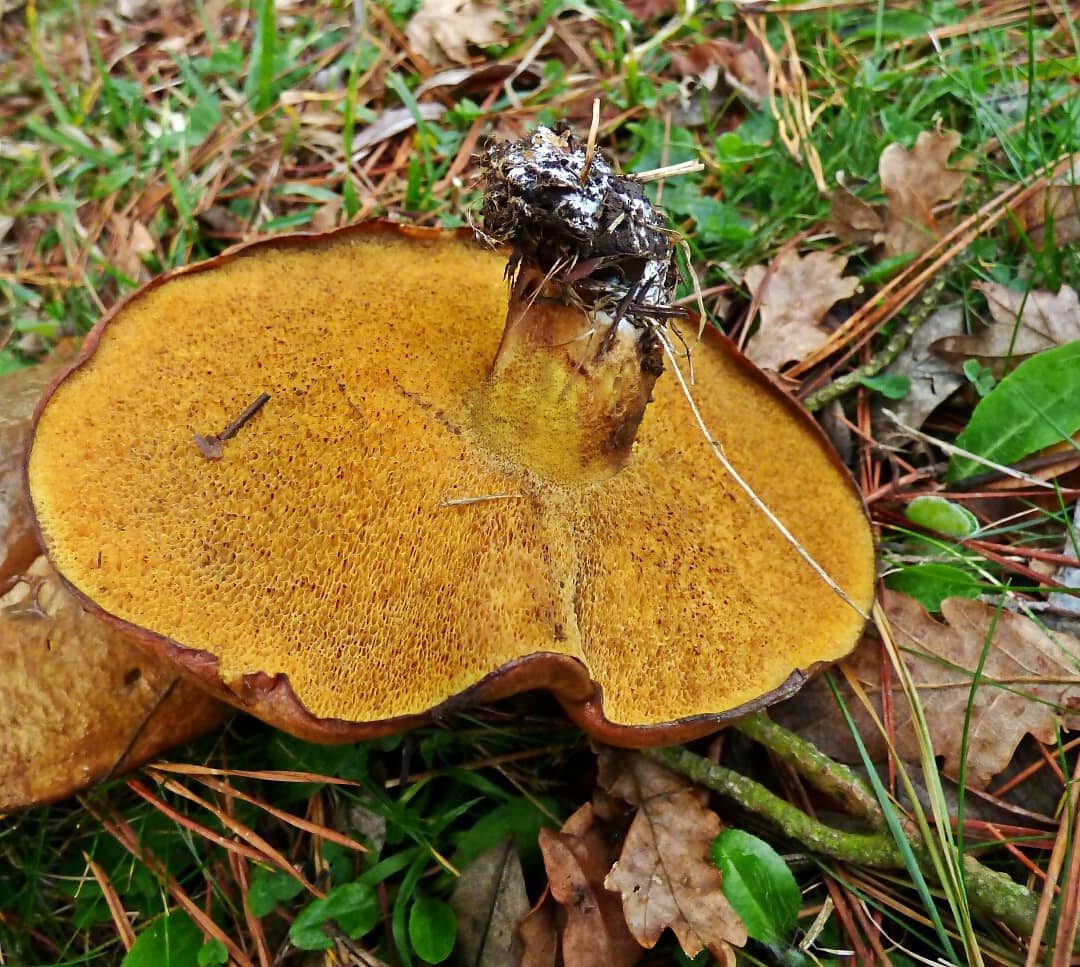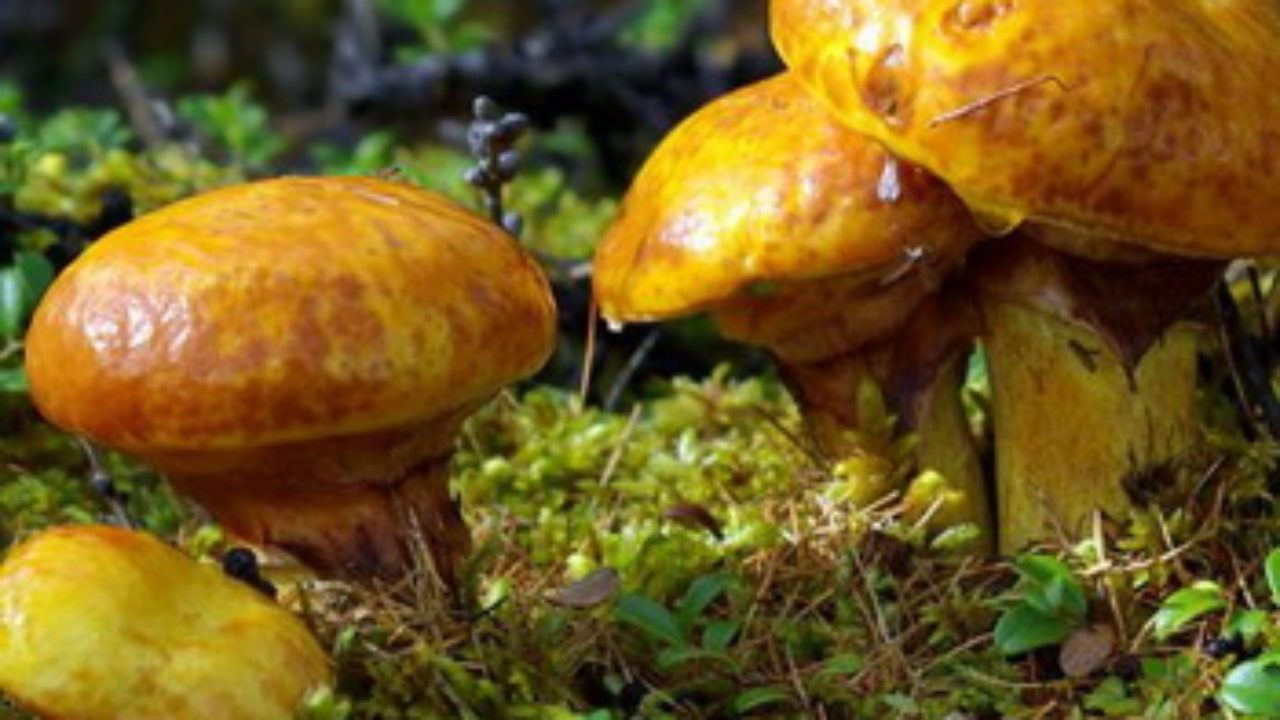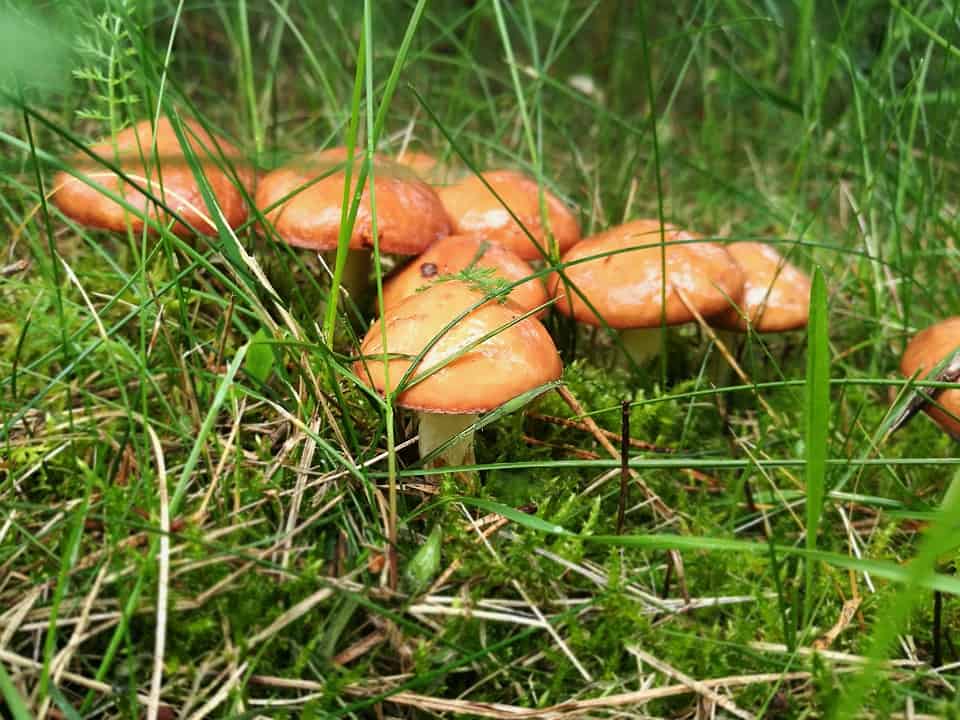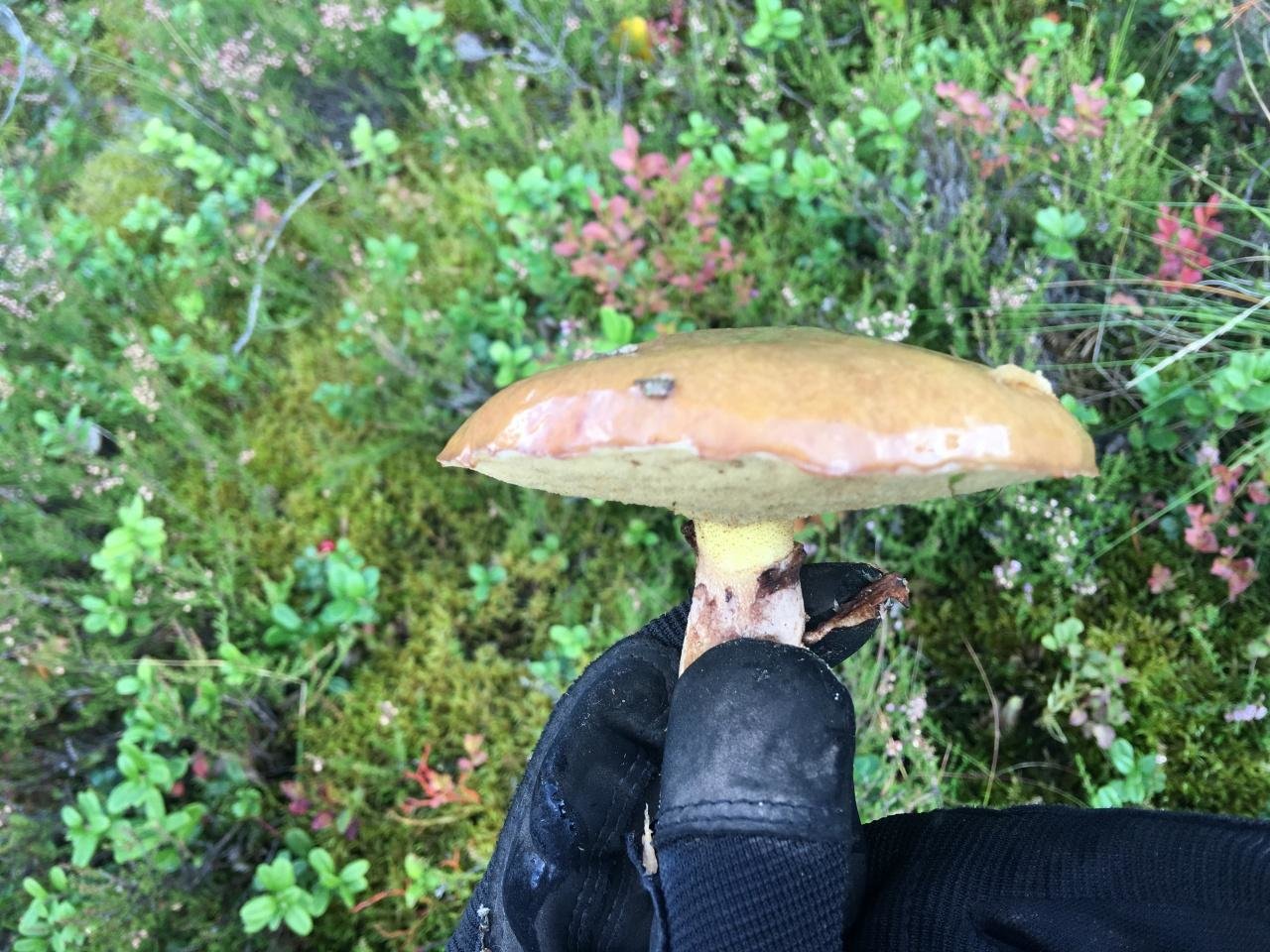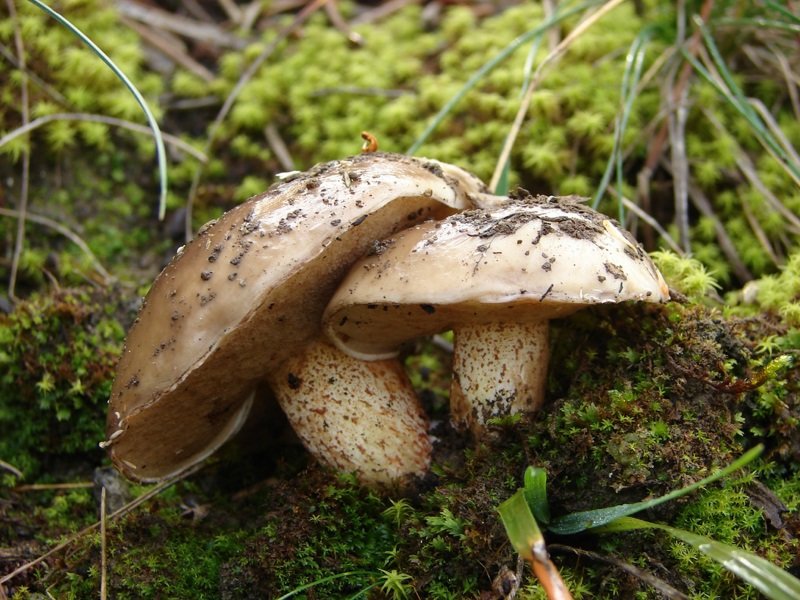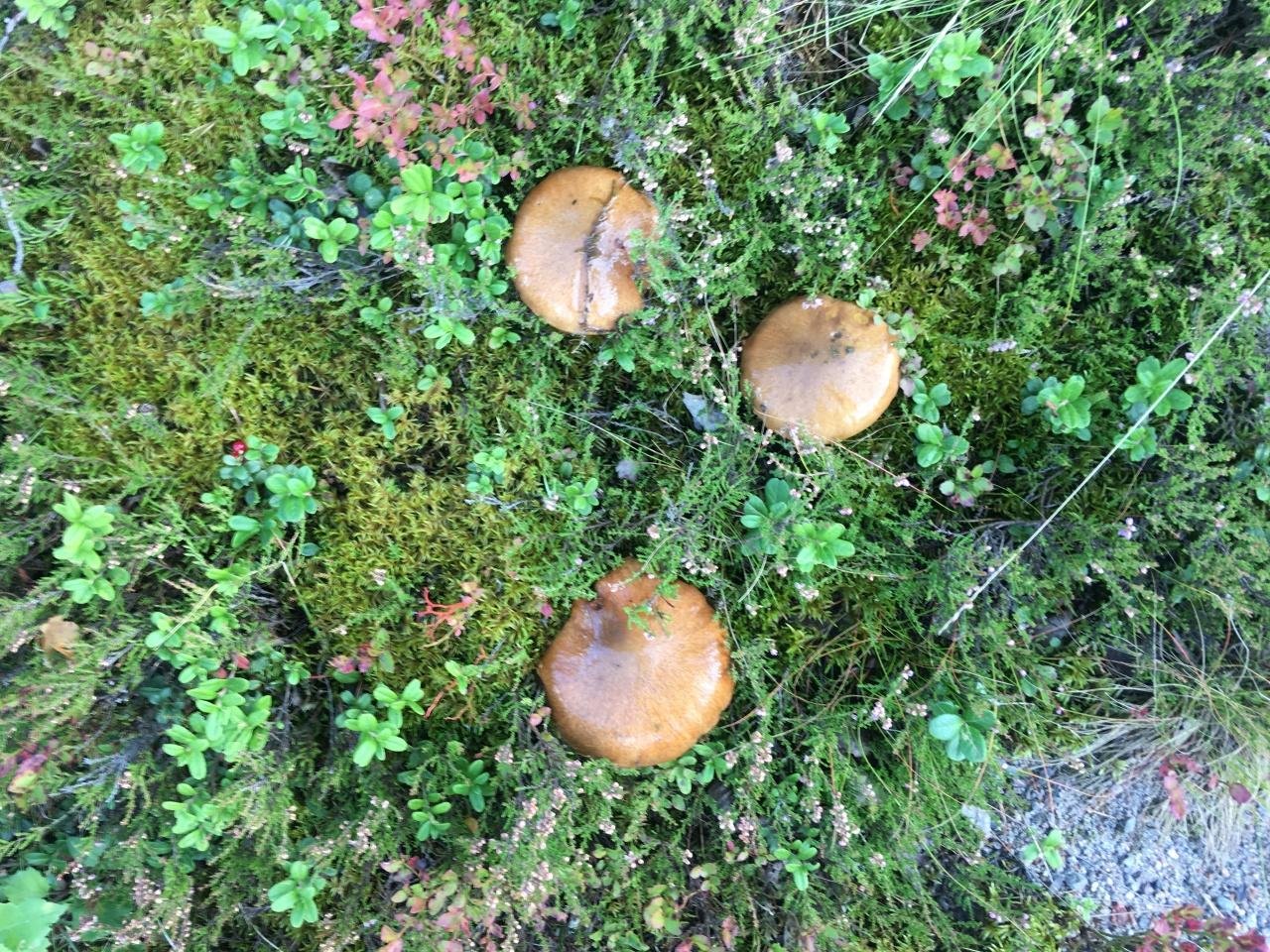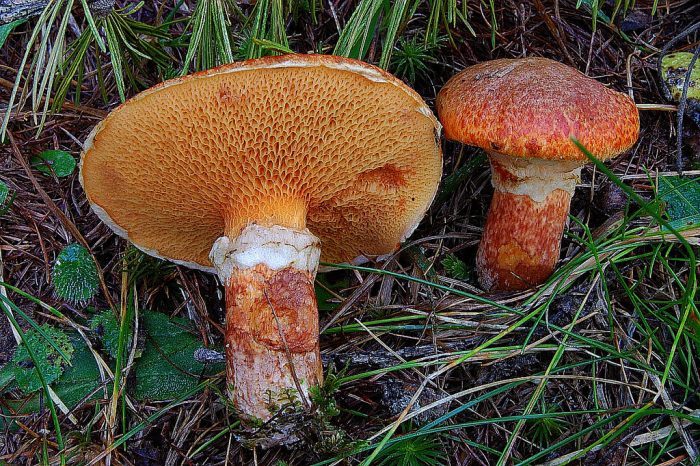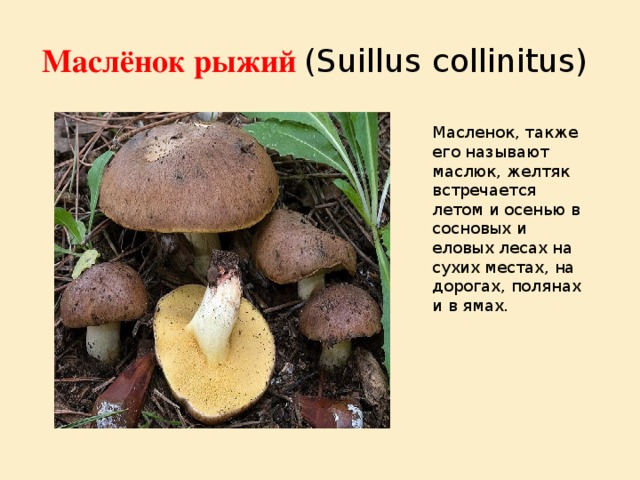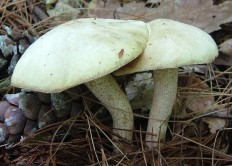Larch butter dish
Larch butter dish - Latin suillus grevillei
In another way, it is called the Elegant Butter.
Description
Mushroom cap
Larch boletus has fleshy caps that grow up to 30-150 mm in diameter. Young hats have the shape of a cone or hemisphere with a folded edge, adults become almost flat, in some specimens the edges are bent upward.
"Hats" are covered with a smooth, sticky skin, shimmering and easily detached from the hats. It can be golden yellow, bright yellow, brownish, lemon yellow, yellowish red and even brownish yellow-gray.
The caps are filled with dense, but soft and juicy yellowish pulp, which turns brown under the skin, and does not change color if damaged if the mushroom is young. After cutting, the pulp of mature specimens sometimes acquires a pinkish or reddish-brown hue, turning into a brown tone.
The bottom of the hat has a tubular structure of short tubes growing to the legs or slightly descending along them. At first, they are covered with a yellowish veil, but as it grows, it breaks, leaving behind a ring on the leg. The tubular mass is colored in a yellowish or yellow-olive tone, if you press on it, it becomes brown. From tiny pores, tiny drops of a whitish hue stand out, forming brownish spots when dried.
The elegant buttercup reproduces by smooth, elongated, pale yellow spores contained in ocher olive spore powder.
Stipe
The larch oiler builds up a cylindrical or clavate, slightly curved hard leg, reaching 20 mm in thickness and 40-80 mm (sometimes 120 mm) in height. The leg has a granular - mesh structure and a yellowish membranous ring that remains after the veil disappears.
The upper part of the legs is colored yellow, below the ring - in a brownish-red tint. Inside, it is completely filled with lemon-yellow pulp.
Larch butter dish - Latin suillus grevillei
Growing places
Larch boletus prefer conifers with pines, spruces and larch trees, but they grow under larch trees, especially under young ones. They are collected in the Far Eastern, Ural, Siberian, North American and European forests with acidic fertile soil. They are also found in the European part of Russia.
Fruiting occurs in scanty groups and singly, begins in mid-June and ends in early - late October.
Edibility
The pleasant aftertaste and light fruity aroma make Buttercup an elegant and desirable ingredient in the dishes of every gourmet who loves mushrooms. It belongs to the 2nd category of edibility and is used in pickled, salted, fried and stewed form, in soups, sauces and salads. By the way, scientists believe that eating this mushroom helps relieve headaches.
The main thing is to have time to harvest young mushrooms, since mature specimens often turn out to be wormy
It is also important to remove the skin from the caps: if it is dry, hold the mushrooms in boiling water for two minutes
Interesting Facts
If the mushroom film cannot be removed, then it should be dipped in boiling water for a couple of seconds. You can also break it in half and separate the halves in different directions.
A granular oiler leaves brown marks on your hands from milky juice, and therefore you need citric acid or vinegar to clean them.
Forest meat - this is what the people call boletus, because their composition corresponds to a mixture of animal protein and vegetables: iron, iodine, zinc, copper, manganese and phosphorus. Mushrooms are rich in proteins, fats and carbohydrates, and also contain B vitamins, minerals, fiber.
In total, there are more than 50 types of boletus, and it is almost impossible to confuse them with other varieties, and those that are similar are also edible after preliminary boiling. If you come across a granular butter dish in the forest, then you should definitely look nearby, there is certainly a whole company of these tasty and healthy mushrooms nearby.
Description and photo of yellow oil can
How to understand that it is a yellow oil can in front of you? It's so easy to confuse him with other members of the genus.
To do this, we recommend that you read the description.
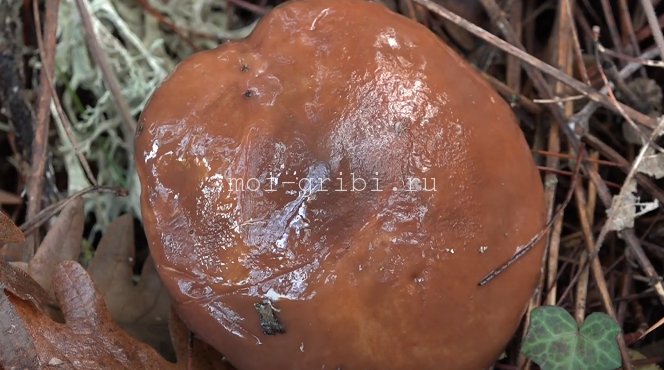
The yellow oil can is a common type of oil. Belongs to the genus Maslenokovyh, the boletus family. The order is painful.
This mushroom is not picky about the choice of soil for its growth. However, there are a number of nuances, according to which it is difficult to distinguish it from other representatives. Experienced mushroom pickers know how the yellow oil can differs from its counterparts. We will devote you to this too.
Also known as: late butterdish, real butterdish, autumn butterdish.
Hat
The first thing you can pay attention to is the hat. In an oiler, which has medium parameters, it can reach a size of 10 and 12 cm
At a young age, the cap has a domed character, rather convex and elastic. However, with age, it loses its volume, the edges rise and it becomes almost flat. However, a bump remains in the very center.
As for the color of the cap, it varies depending on the soil of growth, as well as on the influence of external factors. Most often it has a chocolate hue, less often brown, and even less often purple. However, such an interesting color appears only if the fungus grows in acidic soils.
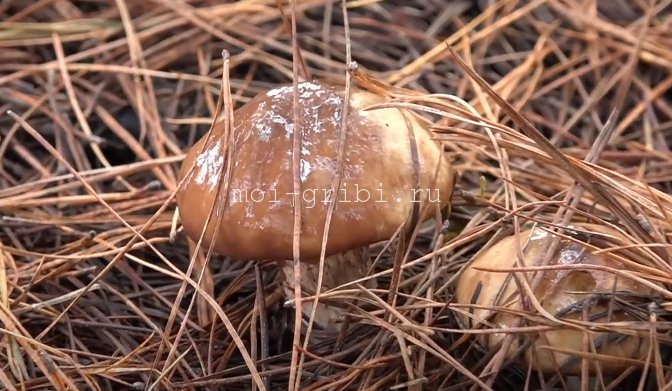
If you touch the cap of the oiler, you will realize that the skin is quite fibrous, while a large amount of mucus accumulates on it.
Look under the mushroom cap. Pale yellow tubes are concentrated there, however, the older, the darker their shades.
The tubular layer itself grows to the stem, acquires first a white, and then a pale yellow tint.
Leg
Now let's look at the leg. It is quite cylindrical, while it is rarely curved. Its height varies from 3.5 to 12 cm in height. Thickness from 15 mm to 25 mm depending on growing conditions. The hat is much more massive than the leg; with age, it begins to outweigh. Therefore, boletus often break.
In young mushrooms, the leg has a lemon-yellow hue, it is quite fibrous and elastic. It is brown at the base. At the junction with the cap, it has a white tint.
As for the older mushrooms, their stem already has a darker shade, full and easily breaks.
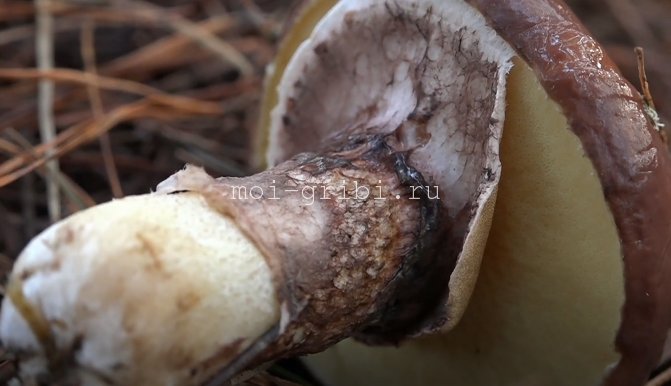
Pulp
If you break the mushroom in half and look at the pulp, you will see that it has a white tint. However, when interacting with oxygen, it begins to change rapidly, and soon, yellow color predominates.
The pulp is quite elastic, if you press on it, you can feel a sharp resistance. The mushroom pulp has a very tasty mushroom smell.
Speaking of pulp, one cannot but mention the spore powder. It has a brown tint, the spores themselves are quite small, pale yellow and smooth, very small and practically indistinguishable to human eyes.
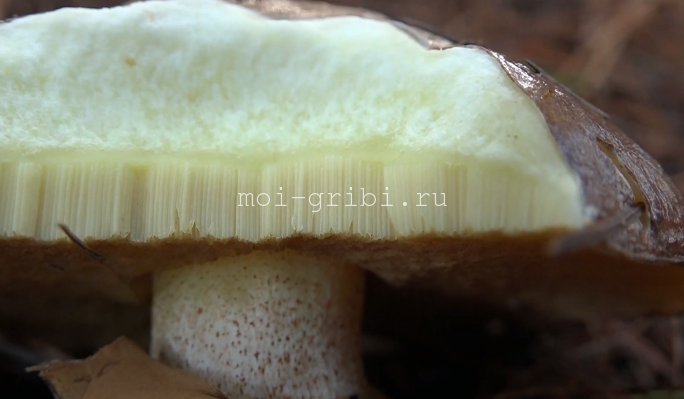
Definitioner
- Basidia (Basidia)
-
Lat. Basidia. A specialized structure of sexual reproduction in fungi, inherent only in Basidiomycetes. Basidia are terminal (end) elements of hyphae of various shapes and sizes, on which spores develop exogenously (outside).
Basidia are diverse in structure and method of attachment to hyphae.
According to the position relative to the axis of the hypha, to which they are attached, three types of basidia are distinguished:
Apical basidia are formed from the terminal cell of the hypha and are located parallel to its axis.
Pleurobasidia are formed from lateral processes and are located perpendicular to the axis of the hypha, which continues to grow and can form new processes with basidia.
Subasidia are formed from a lateral process, turned perpendicular to the axis of the hypha, which, after the formation of one basidium, stops its growth.
Based on morphology:
Holobasidia - unicellular basidia, not divided by septa (see Fig. A, D.).
Phragmobasidia are divided by transverse or vertical septa, usually into four cells (see Fig. B, C).
By type of development:
Heterobasidia consists of two parts - hypobasidia and epibasidia developing from it, with or without partitions (see Fig. C, B) (see Fig. D).
Homobasidia is not divided into hypo- and epibasidia and in all cases is considered holobasidia (Fig. A).
Basidia is the place of karyogamy, meiosis and the formation of basidiospores. Homobasidia, as a rule, is not functionally divided, and meiosis follows karyogamy in it. However, basidia can be divided into probasidia - the site of karyogamy and metabasidia - the site of meiosis. Probasidium is often a dormant spore, for example in rust fungi. In such cases, probazidia grows with metabasidia, in which meiosis occurs and on which basidiospores are formed (see Fig. E).

See Karyogamy, Meiosis, Gifa.
- Pileipellis
-
Lat. Pileipellis, skin - differentiated surface layer of the cap of agaricoid basidiomycetes. The structure of the skin in most cases differs from the inner flesh of the cap and may have a different structure. The structural features of pileipellis are often used as diagnostic features in descriptions of fungi species.
According to their structure, they are divided into four main types: cutis, trichoderma, hymeniderma and epithelium.
See Agaricoid fungi, Basidiomycete, Cutis, Trichoderma, Gimeniderm, Epithelium.
Where it grows and when to collect
But if this mushroom is how useful, where to find it and when exactly to collect it?
Experienced mushroom pickers, who have been going on hikes for yellow boletus for more than a year, will be able to point out to you this question.
So, it is believed that the optimal average daily temperature, which is effective for fruiting the oil can, is between 15 and 18 degrees Celsius.
Fruiting bodies begin to appear after 2-3 days from the moment it rained. In addition, these mushrooms grow most actively when severe frosts are noticeable.
If you live in a mountainous area, then it makes sense to look for yellow boletus around large stones and boulders. It is believed that yellow boletus is grouped where the greatest amount of moisture is collected.
The yellow oiler is widespread in the northern hemisphere, and also actively moves around the planet. It is found in the CIS, in Europe, in Canada, and even in North America.
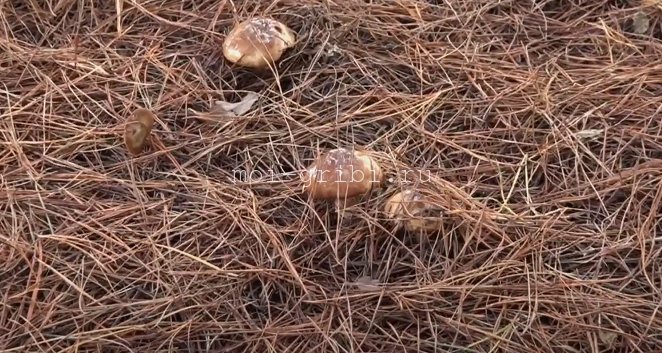
He loves moderately cold climates and cannot stand heat. Therefore, if the summer is hot, then most likely the population of this fungus will decline. However, this mushroom can gradually adapt to the subtropics, when, for one reason or another, it is accidentally introduced by a person into a similar region. They are very fond of pines, with which they form mycorrhiza. However, sometimes they allow themselves to grow next to other representatives of conifers. In deciduous forests, it is much less common, for some reason they do not like the soil that forms under deciduous trees. They are found in fields and forest glades, where there is tall grass.
If you live in Russia, then it makes sense to look for this mushroom in the European part. Also, it is widespread in the northern Caucasus, in the Far East, as well as in Siberia and the Urals.
If you find one yellow oil can, be sure that you will also find its fellows somewhere nearby, as the mushroom loves to gather in large groups.
Seasonality in which you can massively pick mushrooms from September to mid-October.
Butter dish red
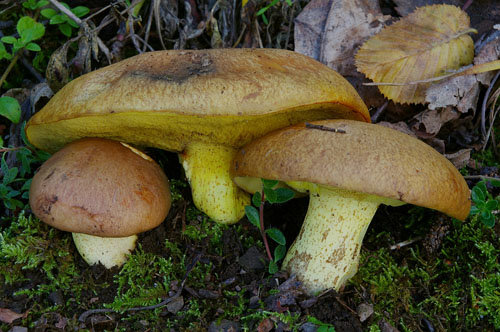
Red oil can (Suillus collinitus)
- Suillus fluryi
- Non-ringed oiler
The red oil can (lat. Suillus fluryi) belongs to the mushrooms of the genus Oil can. The genus includes more than fifty species of mushrooms that grow in the temperate hemisphere.
The mushroom is considered edible with a second category of nutritional value. Among the edible mushrooms, it ranks first among the mushrooms growing in the mixed forest.
The red oil can has a medium-sized fruiting body and a cap with a reddish-red sticky surface. On the mushroom leg, there is a remnant of a filmy bedspread or small warts.
A favorite growing place is the soil under the larch, with which the fungus forms mycelium. At the beginning of summer, the first layer of boletus appears in young pine and spruce plantations. The time for the hike for the red oil can coincides with the flowering time of the pine.
The second layer of boletus appears in mid-July, during the linden blossom. The third layer of the red oil can be collected from the beginning of August until the first severe frosts.
It grows in large groups, which is convenient for mushroom pickers when picking.
The red oil can is a tasty and fragrant mushroom. Not flabby and not wormy mushroom is suitable for any processing. The butter dish is boiled and marinated both peeled and not peeled. This does not affect the taste, but the cap of an unpeeled mushroom after boiling takes on an ugly black color. The marinade obtained during the cooking process becomes thick and black. The purified boiled oil has a bright creamy color, while delighting the eye of the mushroom picker. For drying for future use, an oiler with an unpeeled cap is used, since over time it will still darken.
The red oil can, for its nutritional qualities, is perfectly appreciated by both amateurs and professional mushroom pickers.
Butter dish (Suillus luteus)
- Other names for the mushroom:
- Ordinary butter dish
- Butter dish yellow
- Late butter dish
- Autumn butter dish
Synonyms:
- Boletus luteus
- Boletopsis lutea
Butter dish (Suillus luteus) is the scientific name of the most common type of butter. The word luteus in the scientific name of the mushroom means "yellow".
Growth:
Oily can grow on sandy soil from late May to November in coniferous forests. Fruiting bodies appear singly or most often in large groups.
External description
Hat:
The cap of the present Oily (Suillus luteus) reaches a diameter of up to 10 cm, convex, later almost flat with a tubercle in the middle, sometimes with upward curved edges, chocolate-brownish, sometimes with a purple tint. The skin is radially fibrous, very slimy and easily separated from the pulp. The tubules are initially pale yellow, later dark yellow, adherent to the peduncle, 6-14 mm long. The pores are small, in young mushrooms pale yellow, later bright yellow, brownish yellow. Tubular layer adherent to the pedicle, yellow, the pores are at first whitish or pale yellow, then yellow or dark yellow, small, rounded.
Leg:
Cylindrical, solid, 35-110 mm high and 10-25 mm thick, lemon-yellow at the top, brownish and longitudinally fibrous at the bottom. A white filmy blanket, which first connects the leg to the edge of the cap, leaves pieces on the leg in the form of a black-brown or purple ring. Above the ring, the leg is mealy.
Pulp:
The cap is soft, juicy, slightly fibrous at the stem, whitish at first, later lemon-yellow, rusty-brownish at the base of the stem.
Spore powder:
Brown.
Spores: 7-10 x 3-3.5 µm, ellipsoid-fusiform, smooth, pale yellow.
Similarity
The red butter dish (Suillus fluryi) is very similar to the real butter dish, which is distinguished by the absence of a ring on the leg. It has no resemblance to poisonous mushrooms.
Use
Real butter dish - Edible, tasty mushroom of the second category, in taste, it is very close to porcini mushrooms. It is better to remove the skin from the cap before use. It is consumed dried, fresh, pickled and salted. Delicious and easily digestible mushroom. Suitable for preparing soups, sauces and side dishes for meat dishes. To be pickled.
Spreading
The optimum average daily temperature for fruiting the oiler is + 15 ... + 18 ° C, but the ordinary oiler does not react strongly to temperature fluctuations.Fruiting bodies of boletus usually appear 2-3 days after rain, and strong dew also stimulates fruiting. In mountainous areas, boletus can grow massively around stones, this is due to the condensation of moisture on the surface of the stone. Fruiting ceases at a temperature of -5 ° C on the surface of the soil, and after freezing of the upper layer by 2-3 cm, it does not resume. In the summer (at the beginning of the season) boletus is often damaged by insect larvae, sometimes the proportion of unsuitable "wormy" boletus reaches 70-80%. In autumn, insect activity decreases sharply.
Butter dish is widespread in the Northern Hemisphere, prefers a moderately cold climate, but it is also found in the subtropics, sometimes it is accidentally introduced by humans into tropical regions, where it forms local populations in artificial pine plantations.
In Russia, boletus is widespread in the European part, in the North Caucasus, in Siberia, in the Far East. Fruiting more often in large groups.
Season June - October, massively from September.
Features of the mushroom:
Boletus edulis (boletus) are ahead of boletus edulis in terms of the content of fats and carbohydrates. Real butter dish - One of the most common types of edible mushrooms, it takes first place in its yield in coniferous forests.
Red oil can (Suillus collinitus) what it looks like, edible or not
Red oil can: photo and description
| Name: | Butter dish red |
| Latin name: | Suillus collinitus |
| View: | Edible |
| Synonyms: | Suillus fluryi, Non-ringed butter dish |
| Specifications: | |
| Systematics: |
|
Butterdish red or non-ringed (Suillus collinitus) is an edible mushroom. It is prized for its quality of taste and smell. That is why mushroom pickers prefer this group of mushrooms. Moreover, it is very easy to collect them, they can be found in mixed forests.
How does a red oil can look
To fill your basket with tasty and healthy mushrooms, you need to be able to distinguish them. And the thing is that not all fruiting bodies can be eaten. Among the butter, there are those that should be avoided. A description of the mushroom will be presented below.
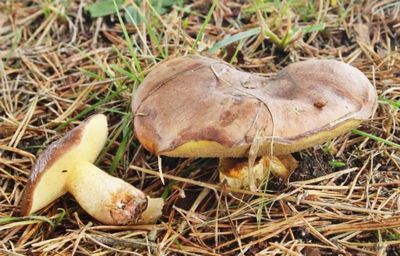
Description of the hat
First of all, mushroom pickers pay attention to the hat. Its diameter can range from 3.5-11 cm
In a young fruiting body, the cap is represented by a hemisphere. As it grows, it changes shape. It straightens out, a bulge arises. Old mushrooms can be identified by straight caps, the edges of which are very often bent upwards, and the middle is depressed.
Around the entire circumference of the cap, young Suillus collinitus have a sticky skin that covers the lower part of the cap. First of all, it is red, as it grows, the color turns brown. During the rain, the upper part of the mushroom body is slippery, as if oiled. Hence the name.
The flesh of a young mushroom is dense, tender, after a little loose, but the color of the lower part is always yellow. The structure is tubular over the entire surface. In these tubes, spores mature, with which Suillus collinitus reproduces.
Leg description
The height of the leg of the ginger mushroom is 2-7 cm, its thickness is in the range of 1-3 cm. It contains a cylindrical shape, incomplete, located in the very center. It becomes slightly wider downwards. Brown spots are clearly visible on the yellowish surface. There are no rings on the legs.
Eat a ginger oil can or not
Suillus collinitus is one of the fruiting bodies highly prized by gourmets. You can eat hats and legs. They taste sweet. The smell, although subtle, is truly mushroom. Edibility category - 2.
Where and how does the red oil can grow
Suillus collinitus can be found in virtually all mixed and coniferous forests of Russia. Feels great on soil substrates. In the north and in the middle lane, it grows under conifers.In the south - under the pines and cypresses.
In domestic forests, fruiting is long, undulating, in 3 stages:
- The first boletus can be harvested in the second half of June under young undergrowth of pines and spruces. A wonderful landmark for starting mushroom hunting is the flowering of the pine.
- The second stage of collection is the end of July, just at this time linden trees begin to bloom in the wilderness.
- The third wave occurs in August-September, right up to the first severe frosts.
Collecting boletus is very simple, since it is a homemade mushroom, loners are rare. The legs are cut with a sharp knife close to the ground. Large caps with curled edges and wormy boletus should not be collected.
Doubles of the red oil can and their differences
Red boils have twins. They must be distinguished, since one of them is inedible.
Granular butter dish. It can be distinguished from Suillus collinitus by its whitish stalk. The cap is dark brown with no dark fibers. White drops are visible on the tubular flesh of young mushroom bodies.
Ordinary butter dish. This twin stands out from the red fungus by rings that remain after the destruction of the cover film. The hat is reddish red.
Butterdish Mediterranean. Unlike its red counterpart, this fruiting body has a light brown cap. The pulp is bright yellow.
How red boletus is prepared
Suillus collinitus is suitable for human consumption. Butter vegetables are boiled, fried, pickled and salted. Mushroom soups and sauces are very tasty.
If Suillus collinitus is harvested for drying, the skins do not need to be removed.
Conclusion
The red oil can rightly occupies the main place among mushroom pickers. After all, many delicious and healthy dishes can be prepared from them. The main thing is to make sure that there are no inedible doubles in the basket during the collection.
Description of the granular oiler
The diameter of the cap is 5-10 centimeters. Young mushrooms are characterized by a hemispherical shape of the caps, but with age, the shape changes to a flat-convex one. The color of the cap is yellow-ocher, yellow-brown or red-brown.
The lower part of the cap is white or light yellow in color, and in older specimens it becomes sulfur-yellow. Drops of milky white juice often appear on the bottom of the cap. In wet weather, the cap becomes slimy. The main difference between the granular oiler and other mushrooms is that there is no cover on the cap.
The length of the leg ranges from 4 to 8 centimeters, and the diameter is 1-2 cm. The leg is solid, without a ring, cylindrical in shape. The color of the leg is yellowish. In the upper part of the leg, whitish drops often collect, when these drops dry out, a brown granularity is formed.

The tubular layer is adherent, the color of the tubes is yellowish. Their length ranges from 0.3 to 1 centimeter. The pores are small and round. Young mushrooms have light yellow pores, and as they grow older, they change to greenish, ocher or yellow-brown.
The pore diameter in adult fungi reaches 1 millimeter. The flesh of the granular oiler is fleshy and elastic. Initially, the flesh is whitish, but later becomes yellowish.
On the cut, the color of the mushroom flesh remains unchanged. The pulp has a pleasant fruity aroma. Spore powder of yellow color. The shape of the spores is ellipsoid-fusiform.

Growing places
Granular oil plants grow in coniferous forests and in aspen plantations. These mushrooms grow exclusively on soils rich in lime. They are mainly found in sandy soil in pine forests. They can be seen in the grass at the edges. Granular butterflies grow, as a rule, in groups. Fruiting time lasts from June to July.
Edible oiler granular
In terms of taste, this mushroom belongs to the second category. Remove the skin from the mushrooms before cooking.

Similar species
• Red oil can is considered an edible mushroom of the second category. The fruiting body is of medium size. The shade is reddish-red. The surface of the mushroom is sticky. There is a remnant of the bedspread on the mushroom leg. These mushrooms grow in groups under larch trees.The harvest time for red oil is in the summer. These are quite tasty and aromatic mushrooms, they are not wormy or loose and are great for various types of processing. The peel can be peeled, but it is not at all necessary to do this, the taste does not change from this. The skin affects only the appearance - boiled red butter with the skin turns black. And without the skin - cream;
• Unordered oiler or soiled oiler grows in southern parts of Europe. These fungi form mycorrhiza with some pine species such as European black pine, Scotch pine, Aleppo pine and cedar. Rarely can these mushrooms be found in the northern regions of Poland and Denmark. They are also found in Iran. The non-ringed oiler is in the Red Book of Estonia and Denmark. The harvesting season can last in different areas from September to November and from October to February. The cap of the oiler is a soiled hemispherical shape, with a diameter of 15 centimeters. In dry weather, it is shiny and silky, and in wet weather it becomes sticky;

• Cedar oil can at a young age has a hemispherical cap, but then it becomes cushion-shaped. The diameter of the cap ranges from 3 to 15 centimeters. Her color is brown. In wet weather, it becomes greasy, and when it dries, it becomes waxy. The pulp is slightly sour with a fruity-almond scent. Cedar boletus is good pickled, fried and in soups. The collection of cedar oil takes place from summer to autumn. The name indicates that these boletus grow in cedar and coniferous forests. They are quite common in the Far East and Siberia.

A small glade with granular oil cans.
Edible oil can of the present
Buttercup yellow, like other representatives of this genus, is an edible mushroom. Therefore, you should not have any doubts about how much this mushroom can be eaten.
Yellow butter dish is good in any form, and stewed, pickled and fried.
This mushroom is absolutely not dangerous, however, you should not collect in your basket those representatives of the genus that grow along the highways close to dangerous enterprises. Although butter oil is absolutely safe for human health, unfortunately, it absorbs toxins and toxins that spread around. Because of this, this can lead to minor stomach and intestinal problems.
This mushroom is delicious and belongs to the second category. If we compare its taste with other mushrooms, then it is closest to white ones. Before eating it, it is recommended to remove the skin from the cap, since it contained mucus, which means that most likely there were numerous insects.
This mushroom is easily digestible, so it is included in numerous diets, and is also a good dietary product.
Perfect for preparing side dishes, soups, good with meat and as a sauce.

Calorie content
As mentioned above, yellow oil can easily be called a mushroom, which is a dietary one. In dried form, it is sold in many countries around the world, and is eaten as a separate product.
The yellow oil can taste very pleasant. Therefore, in recent years, having studied the beneficial properties of this mushroom, it is suggested to be eaten by people who are on a diet.
Considering that this mushroom is absolutely not high in calories, it will not cause problems for your figure. So, 100 g of mushrooms contains only 60 calories. The main part goes to proteins, a little less to carbohydrates, and a very minimal amount of calories goes to fats. Therefore, even the daily use of oil will not be harmful. However, this mushroom contains a lot of useful elements that have a positive effect on human health. For example, it contains vitamins A, B, Omega, as well as minerals and substances that have a positive effect on immunity.
Oiler red-red
Oiler reddish-red - Latin Suillus tridentinus
In a different way, this mushroom is called the Trident Butter or the Trentine Butter.
Description
Mushroom cap
The diameter of the Tridentan Oiler's hats is 50-150 mm. At a young age, they have the shape of a hemisphere or pads, later they become more open and flat.
The hat is covered with a rough skin dotted with many fibrous reddish-orange scales that run radially and give the hat a cracked appearance. In rainy weather, it becomes covered with mucus. The colors of the "headwear" are orange - yellow, pale orange, red - orange or red - brown. The older the Trentian Butter, the darker the color of the hat. Occasionally, flaky pieces of white bedspreads remain on the edges of the hats.
The hats are filled with a tight, fleshy pulp of a yellowish, lemon-yellow, just yellow or yellow-brown hue. If damaged, it turns reddish.
The hat bottom consists of an accreted tubular layer of yellowish or orange-yellow tubes with large pores and torn edges, running down the legs. The pores are irregular and angular.
The reddish-red oiler reproduces by elongated yellowish-olive spores that form in an olive-yellow or olive-brownish spore powder.
Stipe
Legs of reddish-red boletus usually taper upwards, occasionally downwards, and reach 10-35 mm in thickness and 40-100 mm in length. The leg has the shape of a cylinder and a filmy ring left over from the bedspread.
Above the ring, it turns yellowish and is covered with a fine mesh, below the ring, the leg is yellow-orange. Closer to the base, a longitudinal pattern of a darker shade is often formed on the legs. The flesh consists of soft fibers and is colored in the same way as the hat, but it is somewhat darker.
Oiler reddish-red - Latin Suillus tridentinus
Places of growth and fruiting
The reddish-red oiler prefers soils rich in limestone, and chooses soil near the rhizomes of larch for growth and fruiting. The fungus is quite rare, and in some regions it is listed in the regional Red Data Books as an endangered species.
Mushroom pickers collect it in the plain and mountainous Altai, West Siberian and Alpine forests, in European countries.
Fruiting of the mushroom is single or small-group, and depending on the area and climate, it occurs in July - end of October or the last days of May - the first week of November.
Edibility
The pulp of the Tridentine butterdish is weak, but it smells like mushrooms and has a very pleasant taste with sour notes. It is considered edible and belongs to the 2nd category of edibility as a mushroom with high nutritional qualities.
Trentino butter can be eaten stewed and fried, added to soups, sauces and salads, pickled, salted and dried for the winter.
Definitioner
- Basidia (Basidia)
-
Lat. Basidia. A specialized structure of sexual reproduction in fungi, inherent only in Basidiomycetes. Basidia are terminal (end) elements of hyphae of various shapes and sizes, on which spores develop exogenously (outside).
Basidia are diverse in structure and method of attachment to hyphae.
According to the position relative to the axis of the hypha, to which they are attached, three types of basidia are distinguished:
Apical basidia are formed from the terminal cell of the hypha and are located parallel to its axis.
Pleurobasidia are formed from lateral processes and are located perpendicular to the axis of the hypha, which continues to grow and can form new processes with basidia.
Subasidia are formed from a lateral process, turned perpendicular to the axis of the hypha, which, after the formation of one basidium, stops its growth.
Based on morphology:
Holobasidia - unicellular basidia, not divided by septa (see Fig. A, D.).
Phragmobasidia are divided by transverse or vertical septa, usually into four cells (see Fig. B, C).
By type of development:
Heterobasidia consists of two parts - hypobasidia and epibasidia developing from it, with or without partitions (see Fig. C, B) (see Fig. D).
Homobasidia is not divided into hypo- and epibasidia and in all cases is considered holobasidia (Fig. A).
Basidia is the place of karyogamy, meiosis and the formation of basidiospores. Homobasidia, as a rule, is not functionally divided, and meiosis follows karyogamy in it. However, basidia can be divided into probasidia - the site of karyogamy and metabasidia - the site of meiosis. Probasidium is often a dormant spore, for example in rust fungi. In such cases, probazidia grows with metabasidia, in which meiosis occurs and on which basidiospores are formed (see Fig. E).

See Karyogamy, Meiosis, Gifa.
- Pileipellis
-
Lat. Pileipellis, skin - differentiated surface layer of the cap of agaricoid basidiomycetes. The structure of the skin in most cases differs from the inner flesh of the cap and may have a different structure. The structural features of pileipellis are often used as diagnostic features in descriptions of fungi species.
According to their structure, they are divided into four main types: cutis, trichoderma, hymeniderma and epithelium.
See Agaricoid fungi, Basidiomycete, Cutis, Trichoderma, Gimeniderm, Epithelium.


